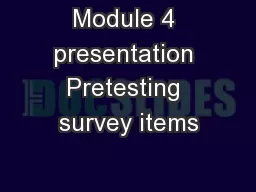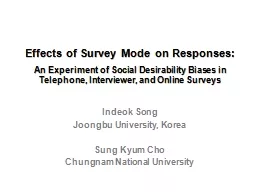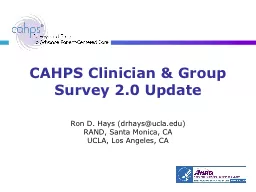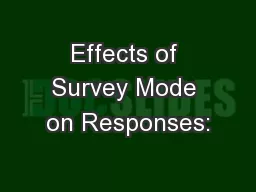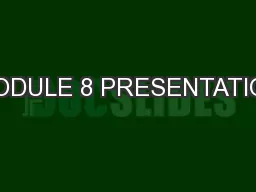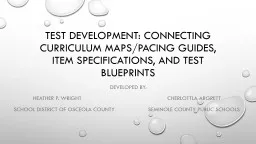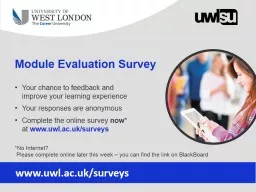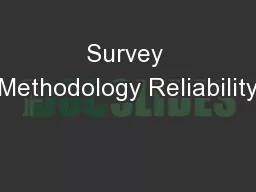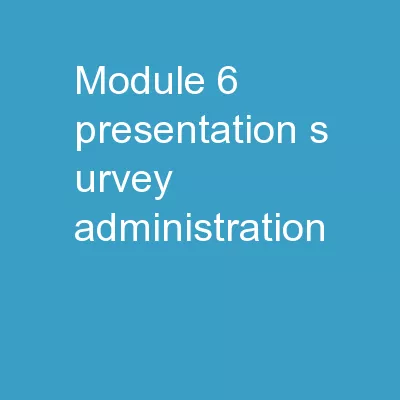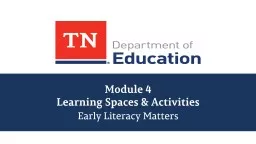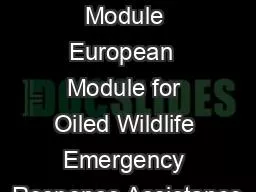PPT-Module 4 presentation Pretesting survey items
Author : briana-ranney | Published Date : 2018-10-22
Pretesting items ensures validity 2 Set pretest goals 3 Outline Methods to test new survey items Expert reviews Cognitive interviews Focus groups Field testing
Presentation Embed Code
Download Presentation
Download Presentation The PPT/PDF document "Module 4 presentation Pretesting survey ..." is the property of its rightful owner. Permission is granted to download and print the materials on this website for personal, non-commercial use only, and to display it on your personal computer provided you do not modify the materials and that you retain all copyright notices contained in the materials. By downloading content from our website, you accept the terms of this agreement.
Module 4 presentation Pretesting survey items: Transcript
Download Rules Of Document
"Module 4 presentation Pretesting survey items"The content belongs to its owner. You may download and print it for personal use, without modification, and keep all copyright notices. By downloading, you agree to these terms.
Related Documents

